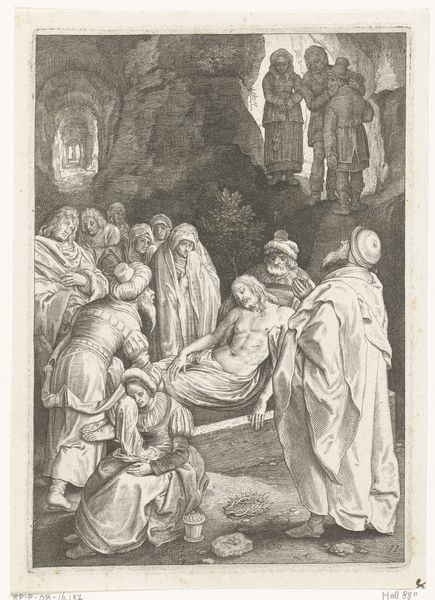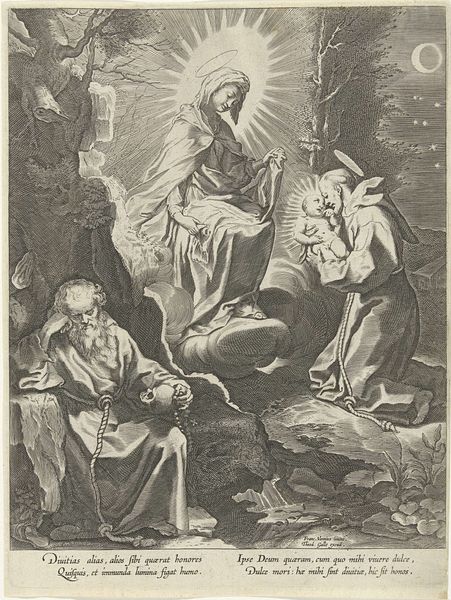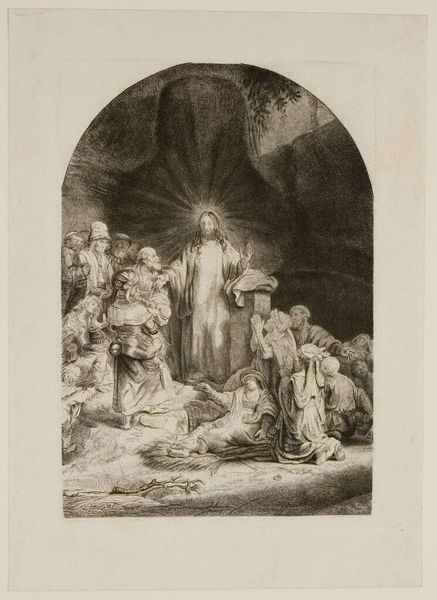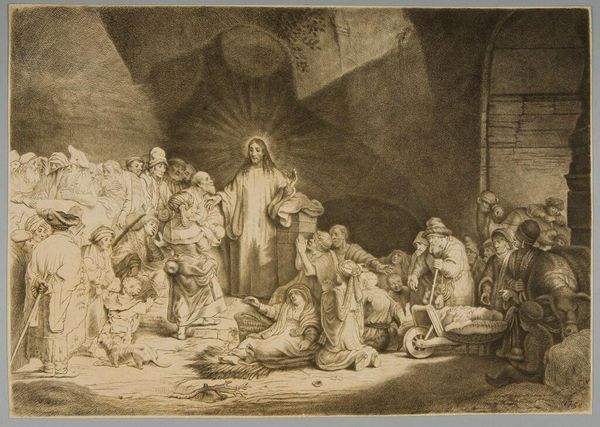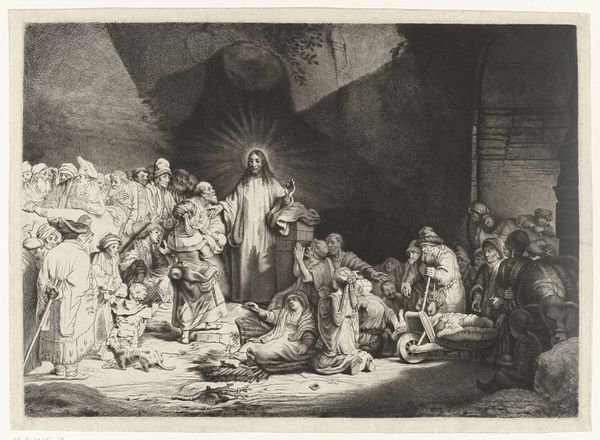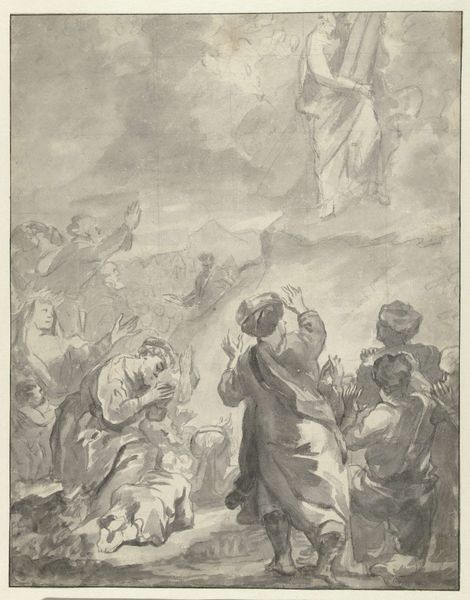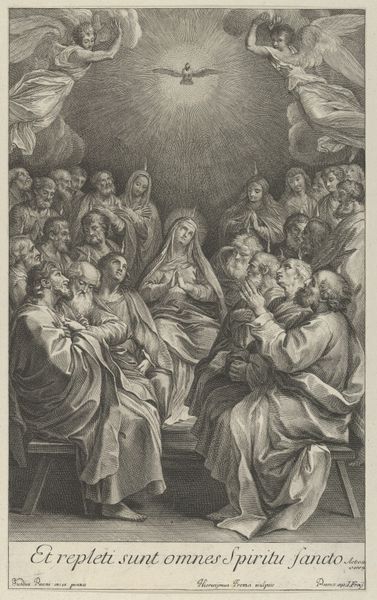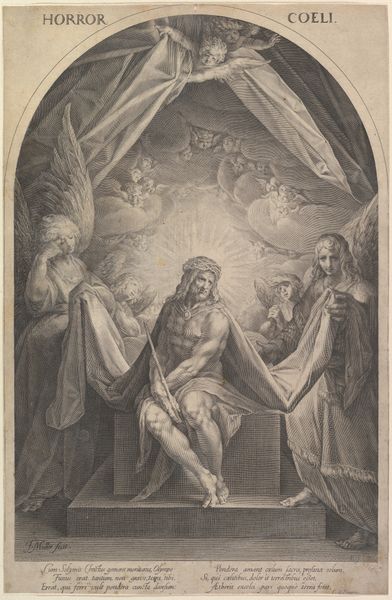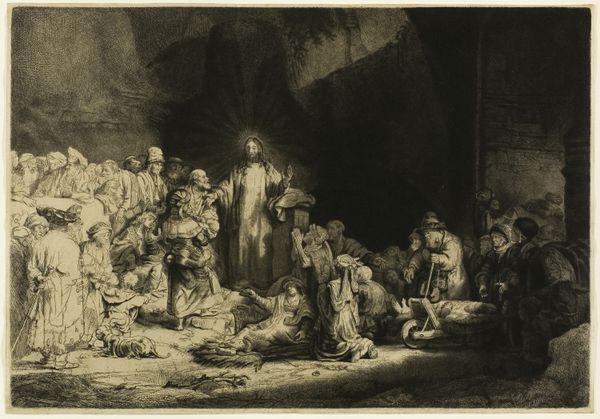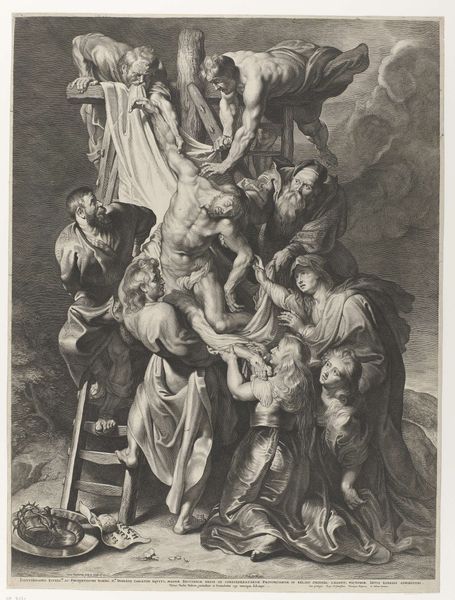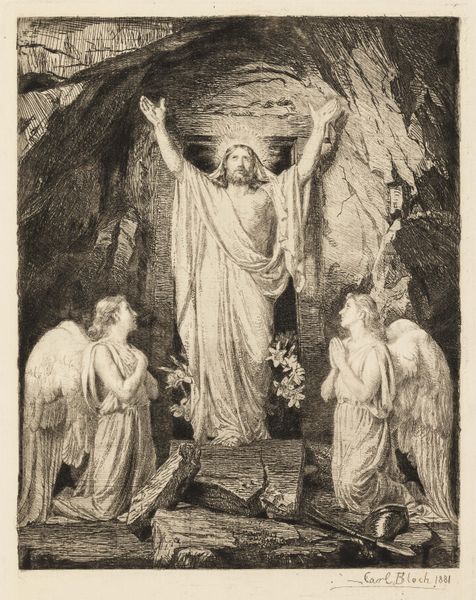
The Hundred Guilder Print: the central piece with Christ preaching c. 1648 - 1800
0:00
0:00
rembrandtvanrijn
Rijksmuseum
print, etching
#
baroque
# print
#
etching
#
figuration
#
history-painting
Dimensions: height 277 mm, width 189 mm
Copyright: Rijks Museum: Open Domain
Curator: This is Rembrandt van Rijn's "The Hundred Guilder Print: the central piece with Christ preaching," dating roughly from 1648 to 1800 and residing here at the Rijksmuseum. It's an etching, a masterwork of the baroque style. What strikes you first about this piece? Editor: The immediate impression is the interplay of light and shadow—the almost theatrical spotlight on Christ, juxtaposed with the murky, indistinct forms of the crowd. It has an intense material presence, despite being a print. Curator: The use of light certainly commands attention. Christ emerges as a beacon, illuminating the marginalized—the sick, the grieving. His teachings provided not only spiritual but tangible social support for those existing in social peripheries. The distribution of light reinforces a visual hierarchy, mirroring socio-political structures and giving representation to subaltern classes within a biblical narrative. Editor: Absolutely, and let’s consider the etching technique itself. Rembrandt pushes the boundaries of what can be achieved with simple materials – metal, acid, ink, paper. His manipulation of the etching needle allowed him to vary the line weight and density, thus creating tone and texture in a way that mimicked painting. There's a raw materiality here, that feels so radical. Curator: It’s fascinating to observe the individuals clustered around Jesus. We see varied reactions to the scene: faith, suffering, curiosity. This work, beyond its spiritual aspect, reflects a society grappling with inequities. Think about Rembrandt’s historical period: a society riddled with visible hierarchical injustice. The act of gathering to listen becomes itself an act of defiance. Editor: Yes! It's all about the act of making—the deliberate crafting of an image intended to question power dynamics. The materiality and the social context were fundamentally intertwined in Rembrandt's era. By emphasizing process and material, Rembrandt could disrupt class structures to make his art more accessible to all. Curator: A compelling point. It's evident that Rembrandt was acutely aware of the materials at his disposal and of the social currents that shaped his time. Viewing this etching from multiple lenses, its intricate narratives invite continuous and critical social examination. Editor: Exactly! The layering of physical marks with deeper themes creates an artwork which stays very close to reality—offering sustained dialogues on issues of material, process and production of human and cultural meaning.
Comments
No comments
Be the first to comment and join the conversation on the ultimate creative platform.
